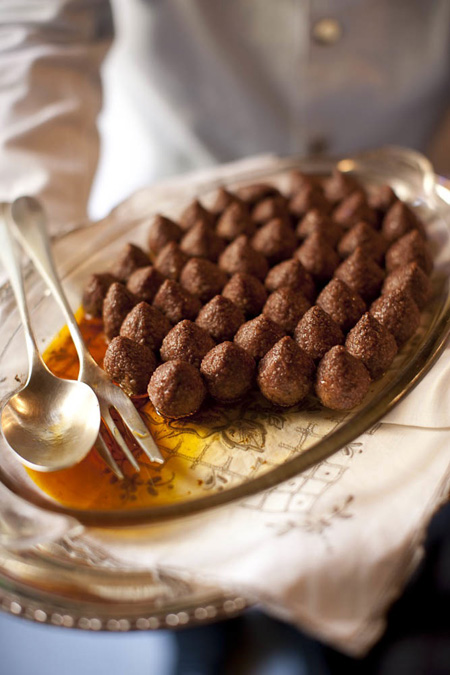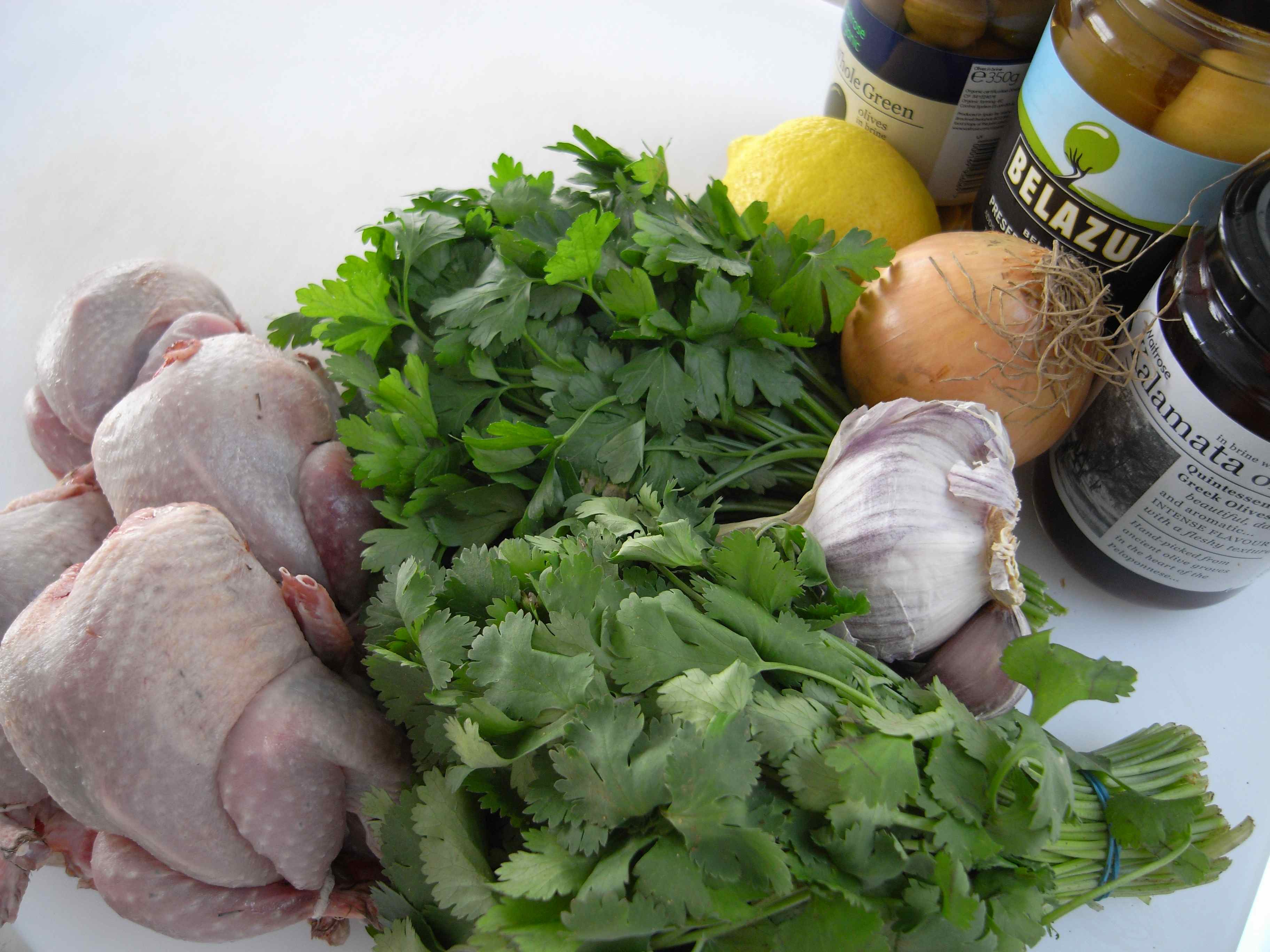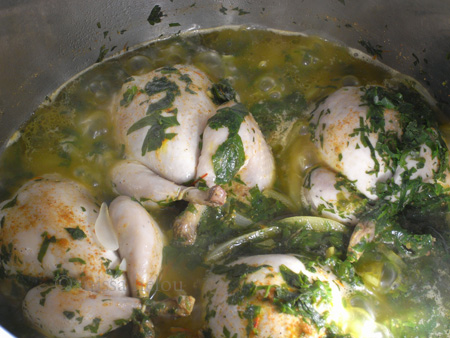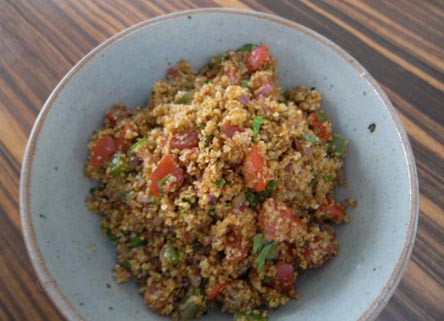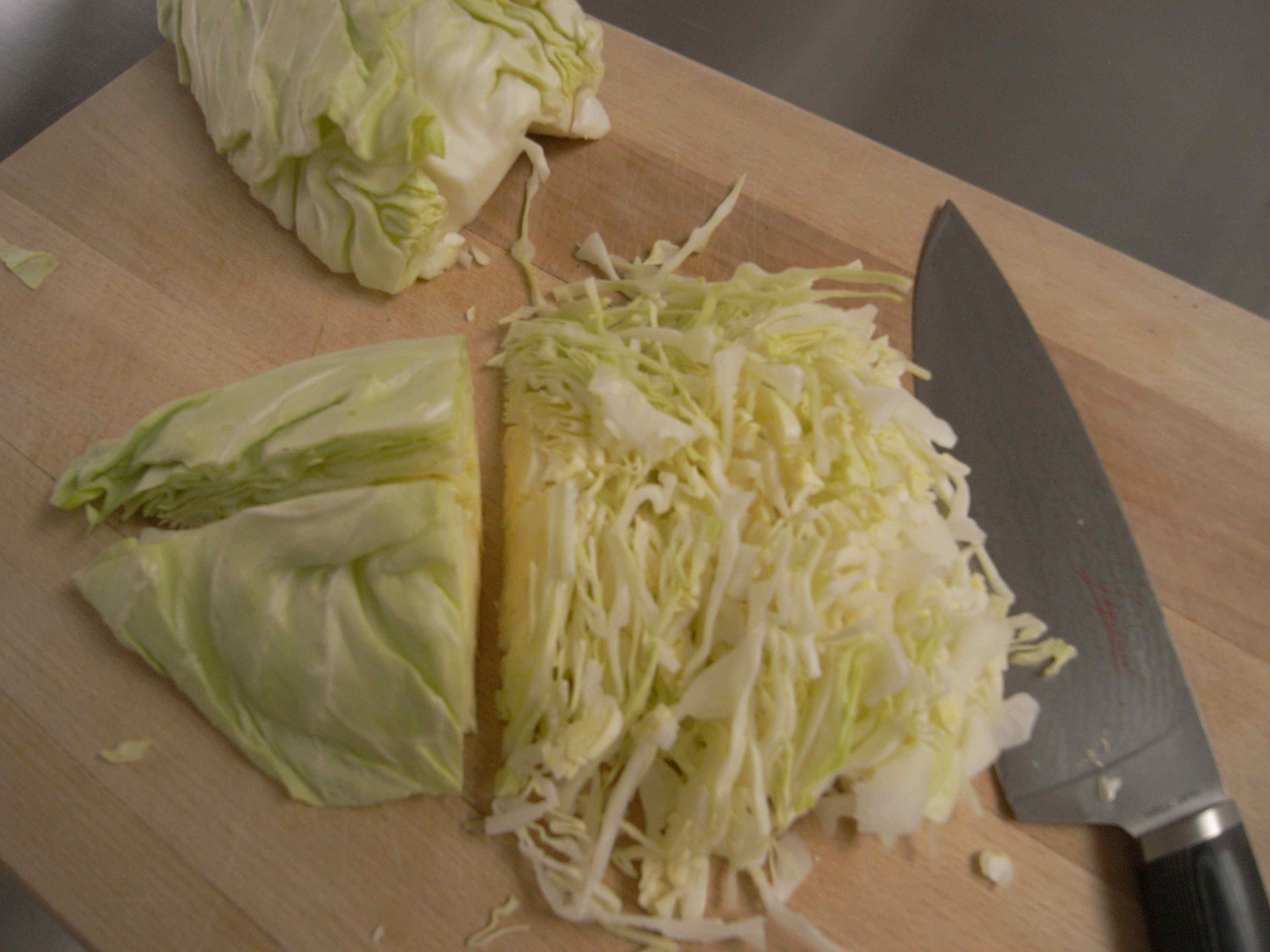10 Sep
Not long now before I go off again on my Syrian adventures. I have to say, I love going to Syria. I love the souks, the people, the sites and, of course, the food. And one of my favourite places to eat there is at my friend Lena Toutounji’s House. Her food is just exquisite, as is her home and her hospitality. I still remember my first lunch there. I had heard a lot about Lena and her cooking from friends in Beirut, and of course from her brother, Pierre Antaki, who took me there. I was very excited at the idea of the lunch and true enough, it was totally memorable, for many reasons. The grace with which Lena received us. Her lovely old butler, all dressed in white. And the menu, which that day consisted of a gratin of desert truffles and a version of kibbeh that I had never had before: tiny little balls with pointed tops (kibbeh kubab means domed kibbeh; the dish is also known as Iraqi kibbeh) with the most luscious spicy filling inside. As I helped myself, Lena warned me not to bite into the kibbeh balls or else my crisp white shirt would be splattered with red fat.
The filling is made by mixing chopped up fat from the tail with grated onion and pepper paste (an Aleppo speciality) and seasoning the mixture with cumin, salt and pepper. Once the balls are made, they are arranged in a baking dish and a knob of butter is placed on each before they are baked in a hot oven until slightly crisp. One of the best dishes you will ever taste. Unfortunately Lena does not do measures, so, all I can offer you here is my recipe for kibbeh and let you work out the quantities for the filling, if you can get tail fat that is. Not to worry if you can’t. You can use butter instead. Not quite the same but it should work.
Kibbeh
I always get my meat already ground, from a good butcher making sure I ask for the best part of the leg for the kibbeh. And be sure to use very fine burghul, otherwise the meat mixture will be too coarse and not so easy to shape. Makes 50 balls
1 medium onion, peeled and quartered
500 g finely minced lean lamb from the leg
200 g fine burghul
2 teaspoons ground cinnamon
2 teaspoons ground allspice
1/2 teaspoon finely ground black pepper
salt to taste
small bowl of lightly salted water
1. Put the quartered onion in a food processor. Process until finely chopped, then add the meat and process until mixed well. Wash the burghul in two or three changes of cold water, drain well and add to the meat. Pulse a few times. Transfer the meat mixture to a bowl.
2. Prepare a bowl of lightly salted water and have it at hand.
3. Add the cinnamon, allspice, pepper and salt to taste and mix with your hand, dipping your hand every now and then in the salted water to moisten both your hand and the kibbeh, until the spices are well incorporated. Knead the meat mixture for about 3 minutes, until you have a smooth paste. Taste and adjust the seasoning if necessary.
4. Divide the kibbeh into 50 balls, each the size of a small plum.
5. Lightly moisten your hands in the salted water and place one meat ball in the cup of one hand. With the index finger of your other hand burrow a hole into the meat ball while rotating it – this makes the hollowing out easier and more even. You should produce a thin meat shell resembling a topless egg. Be careful not to pierce the bottom or sides of the meat.
6. Put 1/2 teaspoon of Lena’s stuffing inside the meat shell, gently pushing the stuffing in with your finger, and pinch the open edges together with your fingers, pinching it upwards to create the pointed top. Put the finished ball on a non-stick baking dish. Continue making the balls until you have finished both meat and stuffing. Place a knob of butter over each kibbeh ball.
7. Preheat the oven to 200º C. Bake for 15-20 minutes, or until crisp and lightly golden. Serve hot.
4 Sep
I am not very good at cooking for myself unless I am testing recipes but I love cooking for friends, especially new best friends whom I seem to acquire with amazing regularity. Not sure if it’s because I am Lebanese (we are a particularly friendly people) or if it is my nature to befriend people easily. In any case, my newest best friend is the very talented and stylish Shuna Fish Lydon and when she came for dinner the other night, I decided to prepare one of my favourite tagines: poussin with preserved lemons and olives. I didn’t have time to go to my Lebanese butcher to buy French cocquelets — English poussins are battery creatures; perhaps the French ones are too but at least they taste better and have a firmer flesh. So, à défaut de cocquelets, I opted for quails from my local Waitrose.
Tagines are incredibly simple to make. Hardly any preparation and once your ingredients are ready, you put them all in the pot, add water and place on the heat; while the tagine is bubbling away, you can do other things. According to Latifa Bennani Smires, one of my gurus for everything Moroccan (the other is Zette Guinaudeau Franc), there are four basic sauces: m’qalli, a yellow sauce with olive oil, ginger and saffron, m’hammar, a red sauce with butter, paprika and cumin, q’dra, another yellow sauce with onion, butter, pepper and saffron and finally m’chermel, a red sauce (not mine) which is a mix of all the others. You can refine these basic sauces and add other ingredients such as parsley and/or coriander, garlic, olives, preserved lemons (peel only), lemon juice, chilli, eggs, honey, cinnamon, orange blossom water, and so on.
The interesting thing about tagines is that the process of caramelization is done in reverse. The ingredients are boiled first, and it is only when the cooking liquid has simmered down to an unctuous sauce, that the meat starts to brown.
If the sauce does not reduce enough by the time the meat is done, all you need to do is take the meat out, boil down the sauce over a high heat, then return the meat to the pot and finish the tagine which will fill your kitchen with the aromas of Morocco and will transport you back if you’ve been, or will make you want to go if you haven’t.
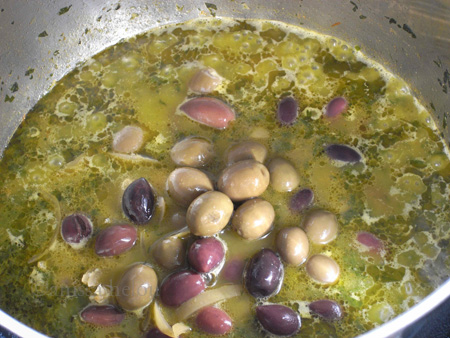
Here are my birds bubbling happily in the sauce. I did have to take them out to reduce the sauce and mash the onions — don’t like grating them raw as they do in Morocco — before adding the olives and preserved lemon.
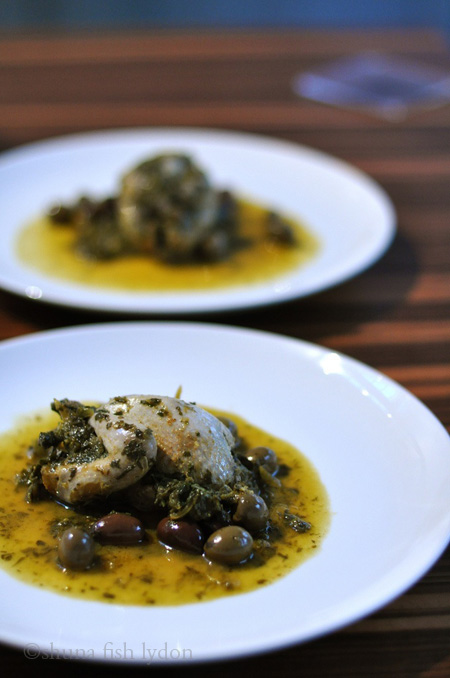
And here is what it looks like on the plate. I am using Shuna’s photograph as it’s prettier than mine. You can see the rest of hers there.
Baby Chicken Tagine with Preserved Lemons and Olives
D’jaj M’chermel
Serves 4-8
1 garlic clove, finely chopped
1 teaspoon ground ginger
½ teaspoon ground cumin
½ teasoon paprika
½ teaspoon finely ground black pepper
good pinch saffron threads
sea salt
4 baby chickens
2 medium onions, thinly sliced
50 g flat-leaf parsley, most of the bottom stalks discarded, finely chopped
50 g fresh coriander, most of the bottom stalks discarded, finely chopped
1 cinnamon stick
2 tablespoons extra virgin olive oil
25 g unsalted butter
juice of 1 lemon, or to taste
1 large preserved lemon, rind only, cut lengthways into strips
150 g purple olives, or a mixture of black and green
1. Put the garlic, ginger, cumin, paprika, pepper, saffron and a little sea salt in a large flameproof casserole. Mix well. Add the baby chickens and rub well with the spice mixture. Let marinate while you prepare the onion and herbs.
2. Add the onion and herbs. Half cover with water (about 750 ml) and drop in the cinnamon stick. Place over a medium high heat and bring to the boil. Add the oil and butter. Cover and cook for 45 minutes (30 minutes for quails), or until the baby chickens are cooked through, and the sauce is reduced.
3. Remove the baby chickens onto a plate and keep warm. Discard the cinnamon stick. Reduce the heat to medium low and simmer gently for 15 more minutes until the onion has disintegrated and the sauce is unctuous.
4. Add the lemon juice, preserved lemon peel and the olives. Cut the baby chickens in half and return to the pot. Simmer for a few more minutes. Taste and adjust the seasoning if necessary. Transfer to a serving dish and serve very hot with good bread.
14 Aug
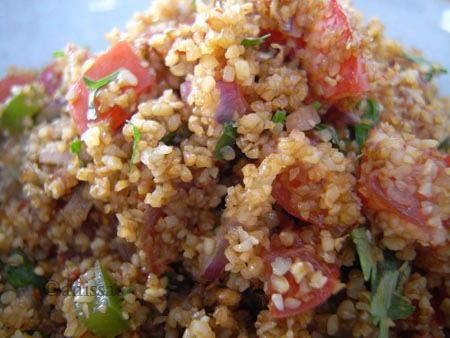
Close-up of kissir — the burghul here is even finer than the one i buy in London. I got it in Aleppo and the cook who buys it for me calls by a special name which I forgot just now!
You remember my recent post on tabbuleh and what is or isn’t the right amount of burghul? Well, I am almost sure that Kissir, a Turkish salad where the main ingredient is burghul, is why people get tabbuleh wrong. Someone must have given a recipe for kissir as tabbuleh and the misinterpretation stuck until recently that is, when some writers and chefs started using less burghul and more parsley, although still not getting the ratios quite right, at least by Lebanese standards. In any case, Kissir has hardly any parsley, a lot of tomatoes, a fair amount of onion and a tiny amount of green pepper for crunch. You can season it with lemon juice or pomegranate syrup — I prefer the latter — and the main spice is Aleppo pepper, or Isot biber, (also known as Urfa biber but this will have to be a whole new post), the Turkish equivalent. Of course, there are lots of variations. Mine is an adaptation from a recipe out of Nevin Halici’s Turkish cookbook, one of my favourites. It is sadly out of print but try to get it on one of the used books sites if you can. You’ll love it. Kissir is just as moreish as tabbuleh, and the advantage is that it is much quicker to make: 15 minutes flat from beginning to end. Here is a whole picture of the salad and a recipe. Enjoy.
Kissir
Turkish Burghul Salad
Serves 4-6
200 g fine burghul
200 ml boiling water
2 small spanish onions, very finely chopped
5 medium firm ripe tomatoes (about 500 g), deseeded, diced into 1 cm square cubes
1/2 small green bell pepper, deseeded and diced small
few sprigs flat-leaf parsley, most of the stalk discarded, finely chopped
4 tablespoons extra virgin olive oil
1 teaspoon Aleppo pepper
1 1/2 tablespoons pomegranate syrup, (or 3 tablespoons lemon juice)
sea salt to taste
1. Put the burghul in a large mixing bowl and stir in the water a few spoonfuls at a time. Cover with a kitchen towel and let sit for 15 minutes.
2. When the time is up, add the onion to the burghul and mix well. Add the other ingredients together with the seasonings. Mix well. Taste and adjust the seasoning if necessary. Serve immediately.
4 Aug
Last Saturday, Yotam Ottolenghi published a recipe for tabbuleh in his Guardian column, the new vegetarian, saying there is a right way and a wrong way to make tabbuleh, which is true. For far too long tabbuleh has been made the wrong way both in Europe and in America. But as much as I like Yotam’s food, his version of tabbuleh still has too much burghul in it. Of course, there are variations. Some families use more burghul than others, but a typical Lebanese tabbuleh (one of the very few national dishes we have) has very little burghul indeed, normally 5% of the amount of tomatoes and less than 10% the amount of parsley. Here is what a typical tabbuleh from the Lebanese mountains looks like. This one was made by my mother when we were shooting the pictures for my Lebanese cookbook, fifteen years ago now which explains why the picture looks a little dated.
But more interesting, at least for me, is white tabbuleh. I first came across the recipe for it when I was researching my Lebanese cookbook. I found it in a book on Lebanese cooking by Ibrahim Mouzannar, who happened to be related to a friend of mine. I was intrigued although not enough to want to find out more, not until a couple of years ago that is, when I wrote Modern Mezze and decided to include Mouzannar’s recipe for white tabbuleh. By then, he had died and no one was able to tell me where his white tabbuleh came from: if it was a regional variation, a seasonal one, or his own creation. I asked his daughter and his brother but neither could help. And to think that I could have easily met him and asked him myself. In any case, it is a great salad and it is called white because the parsley is replaced with cabbage. Otherwise, the remaining ingredients are the same, although the ratios are different.
And the method is fairly similar. The cabbage is thinly shredded, the mint and onion finely chopped and the tomatoes diced except that I prefer to use quartered cherry tomatoes because they look prettier with the cabbage.
The spices are different though. Whereas regular tabbuleh is seasoned with cinnamon and allspice, the white version is seasoned with paprika only. I didn’t like the idea of paprika and decided to use Aleppo pepper instead, which gives the salad a nice kick. The lemon juice and olive oil are the same and here is the final result, a scrumptious and supremely healthy salad that is almost as good a day later.

I am still trying to find out more about this white tabbuleh. So, please write to me or leave a comment if you know anything about it. Until then, here are the recipes for both ‘green’ and white tabbuleh. Each recipe serves 4 to 6, depending on the appetite.
White Tabbulé (Tabbuleh Baidah)
100 g fine burghul
1 pointed organic white cabbage, weighing about 500 g, outer damaged leaves discarded, shredded very fine
100 g spring onions, trimmed, thinly sliced
200 g fresh mint, leaves only, chopped medium fine
400 g firm ripe cherry tomatoes, quartered
juice of 1 lemon, or to taste
100 ml extra virgin olive oil
½ teaspoon Aleppo pepper
sea salt
1. Rinse the burghul under cold water. Drain and set aside to let it fluff up — stir the burghul with a fork every now and then to separate the grains.
2. Put the cabbage, onion, mint and tomatoes in a large bowl. Add the burghul, lemon juice and oil. Season with the Aleppo pepper and salt to taste. Mix well. Taste and adjust the seasoning if necessary. Serve immediately.
© Anissa Helou — from Modern Mezze
Tabbuleh
30 g fine burghul
600 g firm ripe tomatoes, diced into small cubes
50 g spring onions, trimmed and very thinly sliced
400 g flat-leaf parsley, most of the stalk discarded, very finely chopped
70 g mint, leaves only, very finely chopped
1/4 teaspoon ground cinnamon
1/2 teaspoon ground allspice (or Lebanese seven-spice mixture)
1/4 teaspoon finely ground black pepper
salt to taste
juice of 1 lemon, or to taste
150 ml extra virgin olive oil
4 gem lettuce, washed and quartered
1. Rinse the burghul in several changes of cold water. Drain well and put in a bowl. Stir it with a fork every now and then to help fluff it up.
2. Put the diced tomatoes in a bowl and set aside while you prepare the onion and herbs. A word of warning: do not chop the herbs with a mezzaluna. This will only bruise them. Instead, use a razor sharp knife and gather as much as you can handle in a bunch and slice them very thin to end up with nice, crisp thin strips.
3. Drain the tomatoes of their juice and put in a large bowl. Add the spring onion and herbs. Sprinkle the burghul all over. Season with the cinnamon, allspice and pepper. Add salt to taste. Add the lemon juice and olive oil and mix well. Taste and adjust the seasoning if necessary. Serve immediately with the quartered gem lettuce.
© Anissa Helou — from Modern Mezze or Lebanese Cuisine

